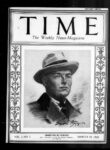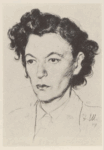-
You can still bank on the Fourth of July
•
In 1978, ATM cards weren’t even called that yet. National Commercial Bank and Trust Co. was going by the moniker “The Bank,” and was one of the first banks to offer an ATM card, which they called the Bank Key. Not too long after, National Commercial would drop “The Bank” and become “Key Bank.”…
-
Floods Along the Mohawk
•
This year, it’s rain. In February of 1938, it was the breakup of ice and heavy winter rains that brought devastating floods to the Mohawk Valley. In Amsterdam, an ice jam wrecked the No. 4 plant of Mohawk Carpet Mills Shuttleworth Division and cut off natural gas service to the Rug City. Ice flows…
-
The Bank documents our history
•
This ad from the 1976 Saratoga Performing Arts Center’s program promotes a thirty-minute documentary about our community’s history produced by The Bank, as the National Commercial Bank and Trust Company was stylishly calling itself. It was offering this 16mm film to any interested group or organization. We simply must find a copy of this…
-
Troy, 1838
•
From 1838, a view of Troy from the west bank of the Hudson River at the United States Arsenal, now known as the Watervliet Arsenal. Click and look at it large, because this lithograph by William James Bennett has everything: boats that are sailed, steam-powered, and rowed. Industry and church steeples. Working horses, working…
-
Frank Jagger, the literate lumberman
•
It’s Friday, so let’s look at a pretty picture. From the Albany Institute’s collection, this is a shot of the Frank A. Jagger, a lumber barge, somewhere in the the canals of the lumber district, which started about where Albany’s north boat launch is today. North of Ferry Street was a network of slips;…
-
Audio transmitted by light
•
Light Beam Casts Chat 24 Miles in Adirondacks Broun, at Schenectady, Interviews Distant Scientist Schenectady, Nov. 22, 1932 — A group of scientists at Schenectady tonight talked with another group at Lake Desolation, twenty-four miles away, over a light beam projected across the lower Adirondack Mountains. It was the longest narrow-casting experiment on record.…
-
The Electric Eye
•
The little problems of perfecting radio and creating trans-continental television signals weren’t the only things that General Electric’s Schenectady scientists were working on in the late 1920s. In 1929, they announced a breakthrough called the “electric eye,” which was intended to ensure classrooms were properly lit. “The teacher will no longer be required to…
-
The first trans-continental face
•
A suprisingly short time after the first televised play was broadcast from one end of Schenectady to not quite the other, General Electric was able to report success in transcontinental television transmission. On February 5, 1929, the Associated Press reported that: “On the basis of reports received from Los Angeles, radio experts of the…
Recent Posts
- Polo Player Nabbed As Game Violator
- Amsterdam Heiress: Prisoner of the Nazis
- The Stockade’s Antique Phone Booth



